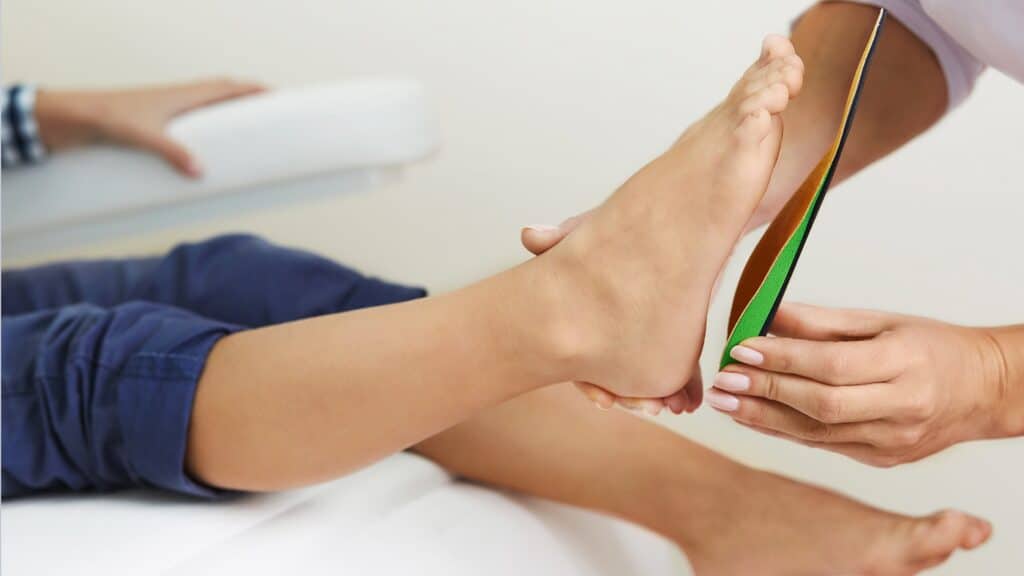About Orthotics
Orthotics are devices that are used to support, align, prevent, or correct the function of the feet and lower limbs. At University Foot Associates, Dr. Nasser prescribes them to help patients experiencing pain or discomfort in their feet or who have conditions that affect the way their feet and legs function.
Why Do People Get Orthotics?
Foot Pain
Orthotics can help alleviate pain in the feet, toes, or legs by redistributing weight and pressure more evenly across the feet.
Overpronation
This refers to the excessive inward rolling of the foot during walking or running, which can lead to pain and discomfort. Orthotics can help correct this by providing support to the arch of the foot. This helps to treat tendon and ankle pain.
Flat Feet
People with flat feet often experience pain and discomfort due to the lack of arch in their feet. Orthotics can provide support and stability to the arch, helping to alleviate pain and improve function for those with flat foot.
High Arches
People with high arches may experience discomfort and instability due to the lack of shock absorption in their feet. Orthotics can provide extra cushioning and support to help alleviate pain and improve stability.
Other Conditions
Orthotics can also be used to treat conditions such as Arthritis, Big Toe Pain, Tendon Pain, Ankle Pain, plantar fasciitis, bunions, hammertoes, and neuromuscular disorders. Many patients report finding relief for lower back pain and spinal issues after being correctly fitted for orthotics.
What Is An Orthotic Made Of?
Orthotics can be made from a variety of materials, including foam, leather, and plastic, and can be worn in a variety of footwear, including shoes, sandals, and boots. They are custom-made to fit the specific needs and anatomy and can help to address a wide range of issues such as foot pain, overpronation, flat feet, high arches, and other conditions.
Types of Orthotics
Insole orthotics are placed inside the shoe to provide support and cushioning to the foot.
Foot orthotics are worn directly on the foot to support the arch, correct alignment, or reduce pressure on certain areas of the foot.
Ankle-foot orthotics (AFOs) support the leg and improve mobility. They are often used in individuals with neurological or muscle disorders.
Knee-ankle-foot orthotics (KAFOs) provide support and stability to the leg. They are often used in individuals with severe mobility issues.
How Are Orthotics Fitted to Feet?
Orthotics are typically fitted by a podiatrist. An initial consultation of medical history, current symptoms, and existing conditions will likely be followed by a physical examination of a patient’s feet and legs as well as their walk and gait.
Dr. Nasser then takes precise foot measurements including the length, width, and arch height. These measurements are used to create a custom-fit orthotic that is tailored to address a patient’s specific needs and symptoms. In some cases, the healthcare professional may make a casting with plaster or foam for a 3D model of the individual’s feet. This allows podiatrists to create a more accurate and customized orthotic. These measurements and models are used to design the orthotics and sent to a specialist company for manufacture.
Once the orthotic is ready, Dr. Nasser will be sure it fits the patient’s foot properly and make any necessary adjustments to ensure it is comfortable wear. We will provide instructions on how to properly care for and use the orthotics. It’s important to note that the process of fitting orthotics can vary depending on the individual’s specific needs and the type of orthotic being fitted. Some orthotics may be ready for use right away, while others may require a break-in period or additional adjustments.




